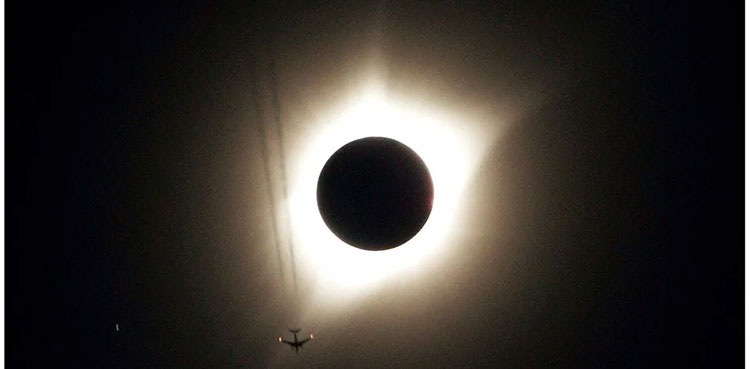
The Pakistan Meteorological Department (PMD) has said that the second and final solar eclipse of 2024, occurring on the night of October 2-3, will not be visible from Pakistan.
The annular solar eclipse, also known as a “ring of fire,” will commence at 8:45 pm local time.
The solar eclipse will be observable in regions of North and South America, as well as Antarctica, primarily visible over parts of southern Chile and Argentina.
An annular solar eclipse occurs when the moon passes directly over the sun’s disk but is farther from Earth, resulting in a bright ring visible around the edges. The path of annularity will be limited, running through specific southern regions of Chile and Argentina.
Key viewing locations:
Perito Moreno National Park, Puerto Deseado, and Puerto San Julián in Argentina
Town of Cochrane in Chile
Rapa Nui (Easter Island)
Partial Solar Eclipse:
A partial solar eclipse will accompany the annular event, visible approximately 85 minutes before and after the ring of fire. The partial eclipse will be observed across parts of South America, Antarctica, North America, and the Atlantic and Pacific Oceans, including Hawaii.
How to look at the eclipse?
According to NASA, it is never safe to look directly at the sun during an annular eclipse without specialized eye protection as you could permanently damage your eyes.
When watching an annular (or even partial) solar eclipse people should always look at it using approved solar viewing glasses (AKA eclipse glasses) or a handheld solar viewer.
Can I use regular sunglasses to watch the eclipse?
No.
Regular sunglasses do not count as eclipse glasses, NASA experts say. No matter how dark, regular sunglasses are not safe for looking directly at the sun.
“Safe solar viewers are thousands of times darker and ought to comply with the ISO 12312-2 international standard,” according to the space agency.
Additional safety tips:
– Wear proper eye protection, such as safe solar viewers and filters
– Regular sunglasses do not provide adequate protection
– Create a pinhole projector to safely view the eclipse by projecting the sun’s image onto a nearby surface
source https://arynews.tv/will-pakistan-witness-last-solar-eclipse-of-2024/

0 Comments